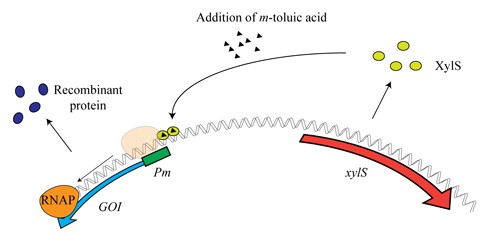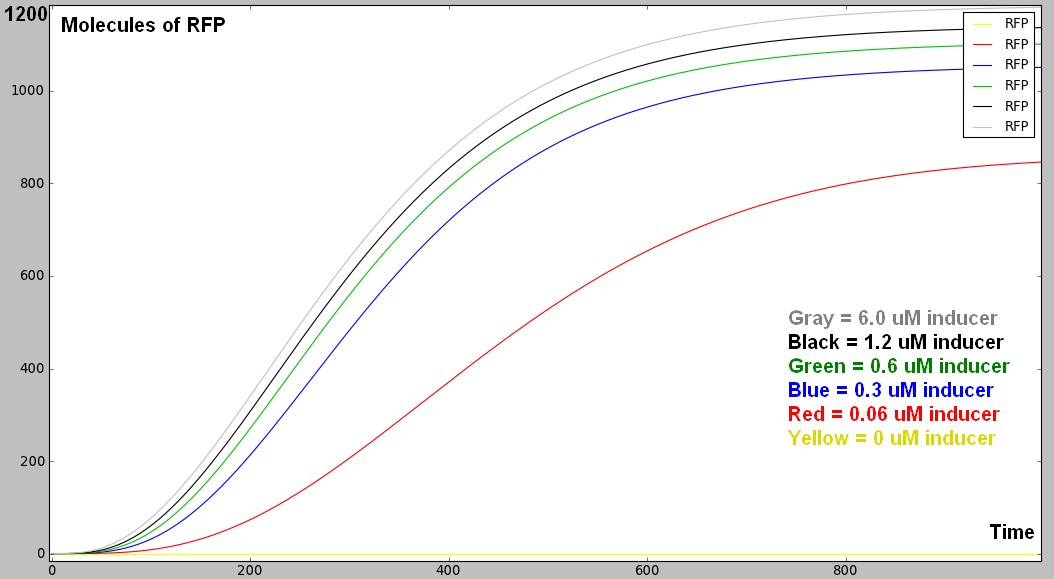</div>
The Pm/Xyls promotor system is a positive regulator system where the regulator molcule, Xyls, is constitutivly produced. When Xyls binds to the inducer m-toluic acid this complex binds to the Pm promotor(see figure 1). Binding to the promotor facilitates binding of RNA polymerase (RNAp) making it active (RNApA) and production of mRNA in an elongation step. The mRNA will be translated into the recombinant protein, or in our case, RFP. Over time mRNA and RFP will be degraded to som extent.

The reaction equations in the Pm/Xyls promotor system are listed below. The degradation of mRNA and RFP will inhibit an exponential production of these and after time the levels of mRNA and RFP will stabilize around a steady state.

A deterministic simulation of the system was run on Cain software with the parameters as viewed in figure 2. Only the number/consentration of the inducer was varieted. A .zip file with all of the modeling files can be downloaded here. The csv files are named according to the number of inducer that was applyed in the deterministic simulation.

Varies starter consentration, 0, 0.06, 0.3, 0.6, 1.2 and 6 µM of the inducer gave the result as indicated in figure 3 and the table below.

| Start consentration (µM) of inducer | Molecules of inducer | Consentration (µM) of RFP (steady state) | Molcules of RFP (steady state) |
|---|---|---|---|
| 0 | 0 | 0 | 0 |
| 0.06 | 100 | 0.51 | 850 |
| 0.3 | 500 | 0.63 | 1050 |
| 0.6 | 1000 | 0.66 | 1100 |
| 1.2 | 2000 | 0.68 | 1135 |
| 6.0 | 10 000 | 0.71 | 1180 |
As the levels of indicer increases, the steady state of the protein product increases up until it reaches 1200 molcules. An huge increase in inducer over 10 000 molecules will not give a RFP steady state of over 1200. The steady state is determined by the rates K4, K5, D1 and D2.
A key discovery in doing the modeling of this system is that the follwing statments are crucial: K1<K11 and K2<K22. If these requirements are not met, the system will not dependent on the level of inducer as the system early will bli saturated.